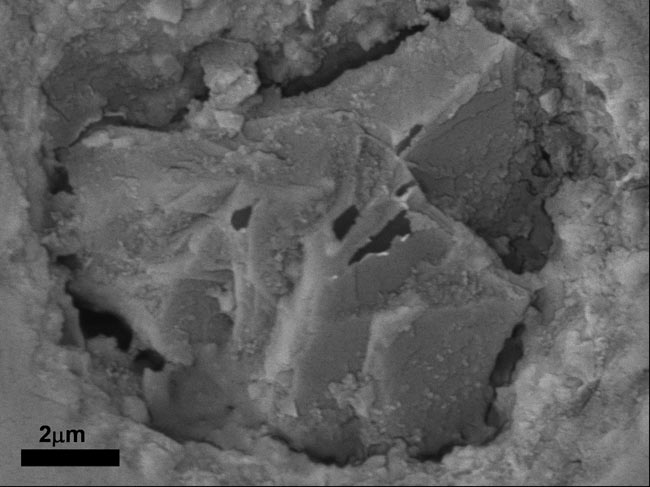Diamonds Nearly as Old as Earth

Diamonds are indeed forever, or at least nearly as old as the Earth, a new study shows.
Scientists have unearthed diamonds more than 4 billion years old and trapped inside crystals of zircon in the Jack Hills region in Western Australia. Nearly as old as Earth itself and considered the oldest terrestrial diamonds ever discovered, the gems could give insights into the early evolution of our planet's crust.
"Jack Hills is the only place on Earth that can give us this kind of information about the formation of the Earth," said study team member Alexander Nemchin, a geochemist at Curtin University of Technology, Western Australia. "We're dealing with the oldest material on the planet."
Hot or not?
About 4.5 billion years ago, Earth developed from a cloud of dust around a proto-Sun. During its youth, Earth smashed into a planet-size body and its surface temperatures likely soared above 10,830 degrees Fahrenheit (6,000 degrees Celsius). When the molten Earth cooled, the liquid lava gelled into rocks. Details about the rocks and when they began to form, a subject of intense debate, have been limited by sparse data.
One such debate centers on whether early Earth was covered by oceans of hot lava or if the planet's surface had cooled enough for rock formation and was covered instead by oceans of water.
Zircon crystals could hold the answer. These crystals are tough and relatively resistant to melting. As a result, they retain their chemical nature and can provide vital clues about past events that occurred in the Earth's crust and mantle.
Sign up for the Live Science daily newsletter now
Get the world’s most fascinating discoveries delivered straight to your inbox.
Recent studies of zircons have suggested the Earth might have cooled much more rapidly than previously thought, with the continental crust and oceans forming as early as 4.4 billion years ago.
The diamond find supports this quick-cooling idea, said study team member Thorsten Geisler of the Institute of Mineralogy at the University of Münster in Germany.
Dating diamonds
The scientists, led by Martina Menneken of the Institute of Mineralogy, ran chemical analyses of the zircons, finding the ancient crystals (and thus the enclosed diamonds) were more than 4 billion years old. That's nearly a billion years older than the previous oldest-known terrestrial diamonds and suggests the diamonds were present in material that crystallized within 300 million years of the formation of Earth, the scientists say.
After considering different diamond-formation scenarios, the scientists concluded the jewels most closely resembled those found in ultra-high pressure conditions. They interpret the findings to indicate that Earth had a relatively thick continental crust by 4.25 billion years ago.
"I'm quite convinced the Earth must be cooler than previously thought because otherwise we couldn't have found diamonds," Geisler told LiveScience. That's because to form diamonds, heavyweight pressures are required.
"To reach a pressure in the mantle, we need a relatively thick continental crust," Geisler explained. "That means we already had rocks [on Earth]."
The study will be published in the Aug. 23 issue of the journal Nature.
- How Are Diamonds Made?
- 101 Amazing Earth Facts
- Greatest Mysteries: How Did Life Arise on Earth?
Jeanna Bryner is managing editor of Scientific American. Previously she was editor in chief of Live Science and, prior to that, an editor at Scholastic's Science World magazine. Bryner has an English degree from Salisbury University, a master's degree in biogeochemistry and environmental sciences from the University of Maryland and a graduate science journalism degree from New York University. She has worked as a biologist in Florida, where she monitored wetlands and did field surveys for endangered species, including the gorgeous Florida Scrub Jay. She also received an ocean sciences journalism fellowship from the Woods Hole Oceanographic Institution. She is a firm believer that science is for everyone and that just about everything can be viewed through the lens of science.










